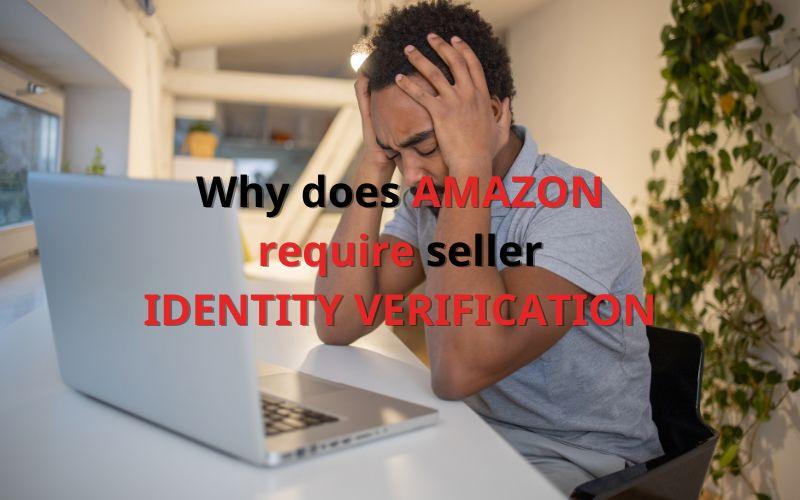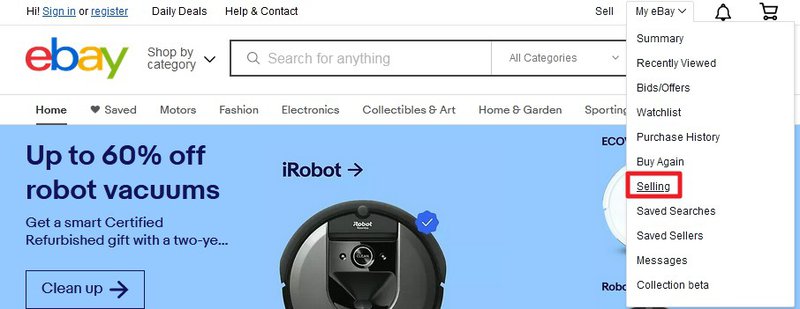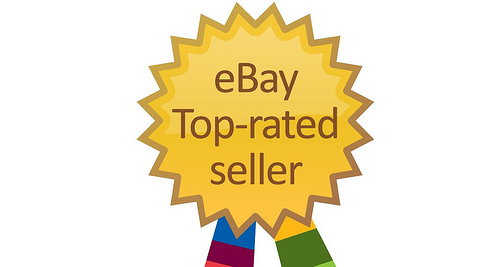Red Flags to Watch Out for in eBay Seller Profiles
When evaluating an eBay seller’s profile, there are several red flags to watch out for to determine if they are legit. One of the most important indicators is the seller’s feedback rating. A low feedback rating or a high number of negative reviews can be a sign of an untrustworthy seller. Additionally, be wary of sellers with recently created accounts or those who have not completed their profile information. These could be indicative of a scammer trying to hide their true identity.
Another red flag is a seller who has an unusually high number of listings for a particular item or category. This could be a sign of a seller who is trying to flood the market with counterfeit or low-quality items. Furthermore, be cautious of sellers who use generic or stock photos instead of actual images of the item being sold. This could be a sign of a seller who is trying to deceive buyers about the condition or authenticity of the item.
It’s also important to check the seller’s profile for any inconsistencies or suspicious activity. For example, if a seller’s profile says they are located in one country but their listings say they are shipping from another country, this could be a sign of a scammer. Similarly, if a seller’s profile has a lot of grammatical errors or seems to be written in a way that is not natural, this could be a sign of a scammer who is not fluent in the language.
By watching out for these red flags, buyers can help protect themselves from unscrupulous sellers and ensure a safe and successful transaction on eBay. Remember, it’s always better to be safe than sorry, and taking the time to thoroughly research a seller’s profile can save you from a lot of hassle and potential financial loss in the long run.

Verifying Seller Identity: What to Look for in Feedback and Reviews
When evaluating an eBay seller’s credibility, it’s essential to examine their feedback and reviews. Feedback ratings can provide valuable insights into a seller’s reliability, communication skills, and overall performance. However, it’s crucial to be aware of fake or manipulated feedback, which can be created by the seller themselves or by their friends and family.
To identify genuine feedback, look for reviews that are specific, detailed, and relevant to the transaction. Be wary of generic or overly positive comments that seem suspicious or fake. Additionally, check the feedback ratings over time to ensure that the seller has consistently maintained a high level of performance.
Reviews can also provide valuable information about a seller’s products and services. Look for reviews that mention specific details about the item, such as its condition, packaging, and shipping time. Be cautious of reviews that seem too good to be true or that are written in a way that seems unnatural.
Another way to verify a seller’s identity is to check their feedback from other buyers. Look for feedback that mentions the seller’s communication skills, responsiveness, and willingness to resolve issues. This can give you an idea of how the seller interacts with their customers and whether they are reliable and trustworthy.
By carefully examining a seller’s feedback and reviews, you can gain a better understanding of their credibility and reliability. This can help you make informed decisions when purchasing on eBay and reduce the risk of dealing with unscrupulous sellers. Remember, when it comes to determining how can you tell if an eBay seller is legit, verifying their identity through feedback and reviews is a crucial step in the process.
.jpg)
How to Research an eBay Seller’s Reputation Outside of eBay
When evaluating an eBay seller’s legitimacy, it’s essential to look beyond their eBay profile and feedback ratings. Researching a seller’s reputation outside of eBay can provide valuable insights into their trustworthiness and help you make an informed purchasing decision. Here are some ways to research an eBay seller’s reputation outside of the platform:
Check for social media presence: A legitimate seller is likely to have a social media presence, such as a Facebook page or Twitter account. Look for their social media profiles and check if they have a consistent brand identity and engage with their customers. Be wary of sellers with no social media presence or those who seem to be hiding their identity.
Look for a website or blog: Many legitimate sellers have their own website or blog where they showcase their products and share information about their business. Check if the seller has a professional-looking website or blog and if it provides valuable information about their products and services.
Check for reviews on other platforms: Look for reviews of the seller on other platforms, such as Google, Yelp, or Trustpilot. Check if the seller has a consistent rating across different platforms and if the reviews seem genuine. Be wary of sellers with fake or manipulated reviews.
Verify their physical address: A legitimate seller is likely to have a physical address where they operate their business. Check if the seller has a physical address listed on their website or social media profiles and if it seems legitimate. Be wary of sellers with no physical address or those who seem to be hiding their location.
Check for any complaints or lawsuits: Use online directories, such as the Better Business Bureau or Ripoff Report, to check if there have been any complaints or lawsuits filed against the seller. Be wary of sellers with a history of complaints or lawsuits.
By researching an eBay seller’s reputation outside of eBay, you can gain a better understanding of their trustworthiness and make a more informed purchasing decision. Remember to always be cautious when dealing with online sellers and never hesitate to report any suspicious activity to eBay. By doing your research and being vigilant, you can help ensure a safe and successful transaction on eBay.

Understanding eBay’s Seller Protections and Guarantees
eBay offers several seller protections and guarantees to help protect buyers from unscrupulous sellers. Understanding these protections and guarantees can help you shop with confidence on the platform. Here are some of the key seller protections and guarantees offered by eBay:
Money Back Guarantee: eBay’s Money Back Guarantee ensures that buyers can get a full refund if they don’t receive their item or if it doesn’t match the description. This guarantee applies to most purchases on the platform, and buyers can file a claim within 30 days of the estimated delivery date.
Seller Protection Policy: eBay’s Seller Protection Policy helps protect sellers from unfair claims and chargebacks. The policy requires buyers to provide proof of the issue and gives sellers the opportunity to resolve the problem before a claim is filed.
Verified Rights Owner (VeRO) Program: eBay’s VeRO program helps protect intellectual property rights by allowing rights owners to report and remove listings that infringe on their copyrights, trademarks, or patents.
Feedback and Review System: eBay’s feedback and review system allows buyers to leave feedback and reviews for sellers after a transaction. This system helps build trust and accountability on the platform, and sellers with high feedback ratings are more likely to be trustworthy.
eBay Plus: eBay Plus is a premium membership program that offers additional benefits and protections for buyers, including free shipping, free returns, and double the warranty period. eBay Plus sellers are also required to meet higher standards for customer service and shipping.
How to Use eBay’s Seller Protections and Guarantees: To use eBay’s seller protections and guarantees, buyers should follow these best practices:
Only purchase from sellers with high feedback ratings and a long history of selling on the platform.
Read the item description carefully and check the seller’s return and refund policies.
Use eBay’s secure payment system, PayPal, to protect your financial information.
Keep records of your transaction, including the item description, price, and shipping details.
File a claim or report a problem to eBay’s customer service team if you encounter any issues with your purchase.
By understanding and using eBay’s seller protections and guarantees, buyers can shop with confidence on the platform and reduce the risk of encountering unscrupulous sellers. Remember to always research the seller and read reviews before making a purchase, and don’t hesitate to report any suspicious activity to eBay.
:max_bytes(150000):strip_icc()/GettyImages-164848796-573e86755f9b58723de74fc8.jpg)
Recognizing Scams and Phishing Attempts on eBay
Scams and phishing attempts are common on eBay, and it’s essential to recognize them to avoid falling victim. Here are some common scams and phishing attempts to watch out for:
Phishing emails: Scammers may send emails that appear to be from eBay, asking for your login credentials or financial information. Be cautious of emails that ask for sensitive information, and never click on links from unknown senders.
Fake listings: Scammers may create fake listings for popular items, often with low prices to attract buyers. Be wary of listings that seem too good to be true, and check the seller’s feedback and ratings before making a purchase.
Advance payment scams: Scammers may ask for payment before shipping an item, often using a fake tracking number to make it seem like the item has been shipped. Never pay for an item before receiving it, and use eBay’s secure payment system, PayPal, to protect your financial information.
Counterfeit items: Scammers may sell counterfeit items, often at low prices. Be cautious of items that seem too good to be true, and check the seller’s feedback and ratings before making a purchase.
Return policy scams: Scammers may offer a fake return policy, often with a fake address or contact information. Be wary of sellers who offer unrealistic return policies, and check the seller’s feedback and ratings before making a purchase.
How to Identify Scams and Phishing Attempts:
Check the seller’s feedback and ratings: A legitimate seller will have a high feedback rating and a long history of selling on eBay.
Verify the item’s authenticity: Check the item’s description and photos to ensure it’s authentic.
Be cautious of low prices: If the price seems too good to be true, it probably is.
Use eBay’s secure payment system: PayPal is a secure payment system that protects your financial information.
Don’t click on links from unknown senders: Phishing emails often contain links that can compromise your account or financial information.
What to Do If You Suspect a Scam or Phishing Attempt:
Report the seller to eBay: If you suspect a scam or phishing attempt, report the seller to eBay’s customer service team.
Don’t respond to phishing emails: If you receive a phishing email, don’t respond to it. Instead, report it to eBay’s customer service team.
Use eBay’s built-in protections: eBay offers several built-in protections, including the Money Back Guarantee and the Seller Protection policy. Use these protections to ensure a safe and successful transaction.

What to Do If You Suspect an eBay Seller is Not Legit
If you suspect an eBay seller is not legit, it’s essential to take action to protect yourself from potential scams. Here are the steps to take:
Report the seller to eBay: If you suspect a seller is not legit, report them to eBay’s customer service team. You can do this by clicking on the “Report” button on the seller’s profile page or by contacting eBay’s customer service team directly.
Provide evidence: When reporting the seller, provide as much evidence as possible to support your claim. This can include screenshots of the seller’s profile, listings, and any communication you’ve had with them.
Cancel the transaction: If you’ve already made a purchase from the seller, cancel the transaction immediately. You can do this by going to the “Purchase history” section of your eBay account and clicking on the “Cancel” button next to the transaction.
Request a refund: If you’ve already paid for the item, request a refund from the seller. You can do this by sending a message to the seller through eBay’s messaging system.
Use eBay’s Money Back Guarantee: If you’re not satisfied with the item or if the seller doesn’t respond to your refund request, use eBay’s Money Back Guarantee. This guarantee ensures that you’ll get a full refund if you don’t receive the item or if it doesn’t match the description.
Protect yourself from future scams: To protect yourself from future scams, make sure to research the seller thoroughly before making a purchase. Check their feedback and ratings, and look for any red flags in their profile or listings.
How to Report a Seller to eBay:
Go to the seller’s profile page and click on the “Report” button.
Select the reason for reporting the seller from the dropdown menu.
Provide as much evidence as possible to support your claim.
Submit the report to eBay’s customer service team.
What to Expect After Reporting a Seller:
eBay’s customer service team will review your report and take action against the seller if necessary.
You may be contacted by eBay’s customer service team for additional information or evidence.
The seller’s account may be suspended or terminated if they’re found to be engaging in fraudulent activity.
By taking action and reporting suspicious sellers, you can help keep eBay a safe and trustworthy marketplace for buyers and sellers alike.

Building a Positive Relationship with Your eBay Seller
Building a positive relationship with your eBay seller can help ensure a smooth and successful transaction. Here are some tips on how to communicate effectively and resolve any issues that may arise:
Communicate clearly and respectfully: When communicating with your seller, be clear and respectful in your messages. Avoid using aggressive or confrontational language, and make sure to proofread your messages for spelling and grammar errors.
Ask questions before making a purchase: If you have any questions about the item or the seller’s policies, ask them before making a purchase. This can help avoid any misunderstandings or issues down the line.
Use eBay’s messaging system: eBay’s messaging system is a secure and convenient way to communicate with your seller. Make sure to use this system to ask questions or resolve any issues that may arise.
Be patient and flexible: Sometimes, issues can arise during a transaction. Be patient and flexible, and work with your seller to resolve any problems that may come up.
Leave feedback: After the transaction is complete, leave feedback for your seller. This can help them build their reputation and improve their services.
How to Resolve Issues with Your eBay Seller:
Stay calm and professional: If an issue arises, stay calm and professional in your communication with the seller. Avoid using aggressive or confrontational language, and focus on finding a resolution.
Use eBay’s dispute resolution process: If you’re unable to resolve the issue with the seller, use eBay’s dispute resolution process. This can help resolve the issue quickly and fairly.
Seek assistance from eBay customer service: If you need assistance with resolving an issue, seek help from eBay customer service. They can provide guidance and support to help resolve the issue.
Benefits of Building a Positive Relationship with Your eBay Seller:
Improved communication: Building a positive relationship with your seller can improve communication and help avoid misunderstandings.
Increased trust: When you build a positive relationship with your seller, you’re more likely to trust them and feel confident in your purchase.
Better customer service: Sellers who value their relationships with buyers are more likely to provide better customer service and support.
Increased satisfaction: Building a positive relationship with your seller can lead to increased satisfaction with your purchase and a more positive overall experience.
By following these tips and building a positive relationship with your eBay seller, you can help ensure a smooth and successful transaction and a positive overall experience.

Staying Safe on eBay: Best Practices for Buyers
As a buyer on eBay, it’s essential to take steps to protect yourself from potential scams and unscrupulous sellers. Here are some best practices to help you stay safe on eBay:
Research the seller: Before making a purchase, research the seller’s feedback and ratings. Look for sellers with high feedback ratings and a long history of selling on eBay.
Check the item description: Carefully read the item description and check for any red flags, such as low prices or unrealistic promises.
Use eBay’s built-in protections: eBay offers several built-in protections, including the Money Back Guarantee and the Seller Protection policy. Make sure to use these protections to ensure a safe and successful transaction.
Be cautious of scams: Be aware of common scams on eBay, such as phishing attempts and fake listings. Never click on links from unknown senders, and be cautious of listings that seem too good to be true.
Keep your account secure: Keep your eBay account secure by using a strong password and keeping your account information up to date.
Monitor your transactions: Keep an eye on your transactions and report any suspicious activity to eBay’s customer service team.
How to Avoid Scams on eBay:
Be cautious of low prices: If the price seems too good to be true, it probably is.
Check the seller’s feedback: Look for sellers with high feedback ratings and a long history of selling on eBay.
Use eBay’s secure payment system: PayPal is a secure payment system that protects your financial information.
Don’t click on links from unknown senders: Phishing attempts often involve clicking on links from unknown senders. Be cautious of these links and never click on them.
Benefits of Staying Safe on eBay:
Protection from scams: By following these best practices, you can protect yourself from potential scams and unscrupulous sellers.
Increased trust: When you take steps to protect yourself, you can increase your trust in the eBay platform and the sellers you buy from.
Better buying experience: By being aware of potential scams and taking steps to protect yourself, you can have a better buying experience on eBay.
By following these best practices, you can stay safe on eBay and have a positive buying experience. Remember to always be cautious and take steps to protect yourself from potential scams.

